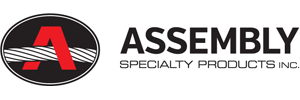Hoisting and Rigging Standard
The following excerpt is from Chapter 9 of the DOE Standard Hoisting and Rigging, DOE-STD-1090-2007.
Hoisting and Rigging Standard – DOE-STD-1090-2007
This chapter specifies operation, inspection, maintenance, and testing requirements for the use of mobile cranes and implements the requirements of ASME B30.5 (“Mobile and Locomotive Cranes”), widely respected and applied throughout the building and construction industry.
This information applies to commercial truck-mounted cranes; crawler cranes; locomotive cranes; wheel-mounted cranes, multiple control stations; wheel-mounted cranes, single control station; and any variation that retains the same fundamental characteristics and are powered by internal combustion engines or electric motors. These cranes have a superstructure capable of rotating 360 degrees mounted on a carrier and have boom raising and lowering capabilities.
The scope of this Safety Standard includes only cranes of the listed types that are powered by internal combustion engines or electric motors. Side boom tractors and cranes designed for railway and automobile wreck clearance, digger derricks, cranes manufactured specifically for, or when used for, energized electrical line service, knuckle boom, trolley boom cranes and cranes having a maximum rated capacity of one ton or less are excluded. This edition incorporates revisions to requirements for operating near electrical power lines, defines critical lift and offers a non-mandatory guidance document on identification and planning for critical lifts. Additional updates have been made throughout to reflect current industry best-practices.
B30.5 offers comprehensive solutions applying to the construction, inspection, testing, maintenance and operation of mobile and locomotive cranes. It is to be used in conjunction with equipment described in other volumes of ASME B30 series of safety standards. Careful application of these B30 safety standards will help users to comply with applicable regulations within their jurisdictions, while achieving the operational and safety benefits to be gained from the many industry best-practices detailed in these volumes. Intended for manufacturers, owners, employers, users and others concerned with the specification, buying, maintenance, training and safe use of mobile and locomotive cranes with B30 equipment, plus all potential governing entities.
For latest ASME standards, refer to the ASME website.

